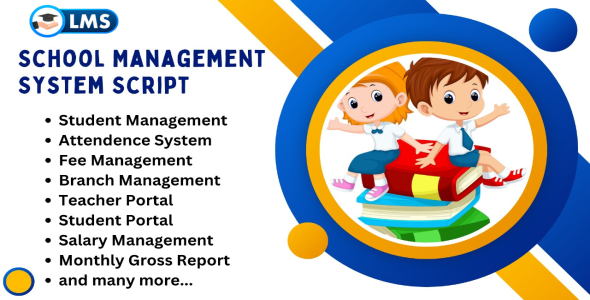
Latest Online School
This School Script allow you to manage for all types of educational institutions like schools and colleges etc. Go To Buy Page
View Demo
learning management software
The Power of Learning Management Software
In today's fast-paced digital era, the traditional methods of education are undergoing a significant transformation. With the advent of learning management software (LMS), educators and institutions are embracing a more dynamic and efficient approach to teaching and learning. This revolutionary technology is not only streamlining administrative tasks but also enhancing the overall educational experience for both students and instructors.
What is Learning Management Software?
Learning management software, often abbreviated as LMS, is a comprehensive platform designed to facilitate the administration, documentation, tracking, reporting, and delivery of educational courses or training programs. It serves as a centralized hub where educators can create, manage, and deliver learning content, while students can access resources, participate in activities, and track their progress.
Key Features and Benefits
1-Centralized Content Management:
LMS provides a centralized repository for all educational materials, including course syllabi, lecture notes, assignments, and multimedia resources. This accessibility ensures that both instructors and students have easy access to relevant course materials anytime, anywhere.
2-Interactive Learning Tools: Modern LMS platforms offer a variety of interactive learning tools such as discussion forums, quizzes, polls, and virtual classrooms. These tools promote engagement, collaboration, and active learning among students, fostering a more dynamic and interactive educational experience.
3-Customizable Learning Paths:
LMS allows instructors to design customizable learning paths tailored to the unique needs and learning styles of individual students. Whether through personalized assignments, adaptive learning modules, or targeted feedback, educators can effectively cater to diverse learners and maximize student success.
LMS streamlines the assessment process by enabling instructors to create, distribute, and grade assignments, quizzes, and exams online. Additionally, built-in feedback mechanisms allow for timely and constructive feedback, empowering students to track their progress and address areas for improvement.
5-Analytics and Reporting:
LMS platforms offer robust analytics and reporting capabilities, allowing instructors to track student performance, monitor engagement levels, and identify trends or patterns in learning behavior. These insights enable data-driven decision-making, facilitating continuous improvement in teaching and course design.
6-Accessibility and Flexibility:
With LMS, educational content becomes accessible anytime, anywhere, and on any device with an internet connection. This flexibility eliminates geographical barriers and time constraints, enabling students to engage in learning activities at their own pace and convenience.
7-Administrative Efficiency:
LMS automates various administrative tasks such as course enrollment, grading, attendance tracking, and reporting, freeing up valuable time for instructors to focus on teaching and curriculum development. Moreover, centralized data management enhances transparency and accountability across the institution.
what are the best practices for designing effective courses in a learning management system
The best practices for designing effective courses in a Learning Management System (LMS) include:
1-Define Clear Learning Objectives:
Start by clearly defining the specific knowledge and skills you want learners to acquire through the LMS. This guides content creation and course design, ensuring alignment with learning goals.
2-Customize and Personalize the User Experience:
Utilize customization options in the LMS to create a tailored and engaging user experience. Customize the interface, branding, and navigation to reflect your organization's identity and enhance the learning journey.
3-Organize Content Effectively:
Structure content logically within the LMS by creating well-defined modules, lessons, and topics that are easy to navigate. Use clear titles, descriptions, and categorization to help learners locate and access relevant content easily.
4-Incorporate Interactive and Engaging Learning Activities:
Enhance learner participation and motivation by including interactive elements like quizzes, discussions, simulations, and multimedia content in the course. This creates an immersive learning experience.
5-Promote Collaboration and Communication:
Facilitate peer-to-peer interaction, knowledge sharing, and community building by using discussion forums, group projects, and social learning features within the LMS. Encourage learners to connect and engage with each other to deep their learning experience.
6-Encourage Continuous Learning and Professional Development:
Offer a variety of courses, certifications, and learning pathways to promote continuous learning and skill development. Encourage learners to set goals, track progress, and celebrate achievements within the LMS.
